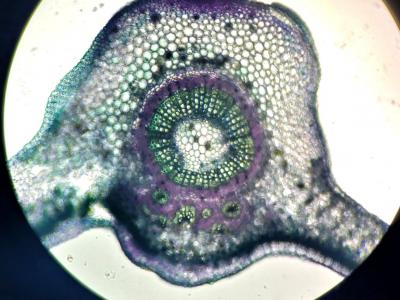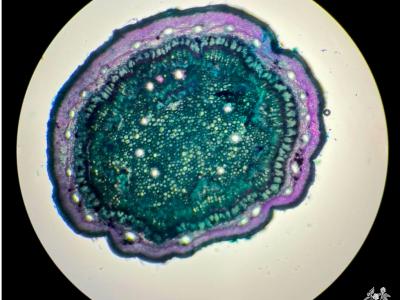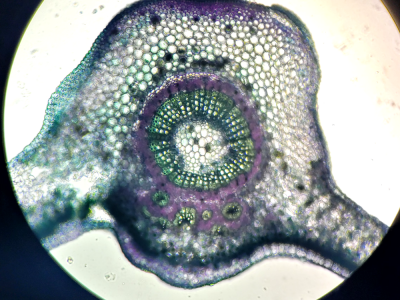




(In territories with significant traditional TRAMIL use)
feuille, jus, gargarismes1
feuille, décoction, gargarismes1
According to the information available:
The use for sore throat is classified as REC based on the significant traditional use documented in the TRAMIL surveys, the toxicity studies, validation and the scientific information published.
Not for use during pregnancy, breastfeeding or in children under 10 years of age.
The leaves of Boerhavia diffusa are a food of relatively widespread human consumption in India.
For sore throats:
prepare a decoction with 30 grams of fresh leaves in 4 cups (1 litre) of water, boil for 10 minutes in a covered vessel. Cool, strain (filter) and gargle 3 times a day.
For use of the leaf juice:
Adequately wash 30 grams of leaf and crush in a mortar with a little water (approximately 15 cubic centimetres) until the juice is pressed out. Pour into a spoon and gargle. Repeat 3 times a day.
Preparations must never be stored for more than 24 hours, even if refrigerated.
1 LONGUEFOSSE JL, NOSSIN E, 1990-95
Enquête TRAMIL. Association pour la valorisation des plantes médicinales de la Caraïbe AVPMC, Fort de France, Martinique.
2 Beltran C, Jimenez S, GOmez A, BeltrAn J, GarcIa G, GOmez H, 2010
screening fitoquimico de hoja de Boerhaavia diffusa (infusión, deccoción y extracto etanólico (maceración). Trabajo TRAMIL. Grupo de Investigación en Química de Medicamentos, Universidad de Cartagena, Colombia.
3 AGARWAL RR, DUTT SS, 1934
Chemical examination of punar-nava or Boerhavia diffusa Linn. Proc Acad Sci 4:73-76.
4 MATHAMS RH, SUTHERLAND AK, 1952
The oxalate content of some Queensland pasture plants. Queensland J Agric Sci 9:317-334.
5 AHMAD K, HOSSAIN A, 1968
Isolation, structure, synthesis and biological action of hypoxanthine-9-L-arabinofuranoside. Pak J Biol Agr Sci 11(2):41-44.
6 AGARWAL RR, DUTT SS, 1935
Chemical examination of punarnava or Boerhavia diffusa Linn. II Isolation of an alkaloid punarnavine. Proc Acad Sci United Provinces Agra Audh India 5:240-242.
7 BASU NK, LAL SB, SHARMA SN, 1947
Investigations on Indian medicinal plants. Q J Pharm Pharmacol 20(1):38-42.
8 SRIVASTAVA DN, SINGH RH, UDUPA KN, 1972
Studies on the Indian indigenous drug, punarnava (Boerhavia diffusa Linn.). Part V. Isolation and identification of a steroid. J Res Indian Med 7(3):34-36.
9 ROIG J, 1988. Plantas Medicinales, Aromáticas y Venenosas de Cuba. 2a ed. La Habana, Cuba: Editorial Científico-Técnica.
10 FERRERES F, SOUSA C, JUSTIN M, VALENTÃO P, ANDRADE PB, LLORACH R, RODRIGUES A, SEABRA RM, LEITÃO A, 2005
Characterisation of the phenolic profile of Boerhaavia diffusa L. by HPLC-PAD-MS/MS as a tool for quality control. Phytochem Anal 16(6):451-458.
11 PEREIRA DM, FARIA J, GASPAR L, VALENTÃO P, DE PINHO PG, ANDRADE PB, 2009
Boerhaavia diffusa: metabolite profiling of a medicinal plant from Nyctaginaceae. Food Chem Toxicol 47(8):2142-2149.
12 CACERES A, GONZALEZ S, GIRON L, 1998
Demostración de la actividad antimicrobiana de plantas TRAMIL en base a los usos populares en la cuenca del Caribe. Laboratorio de productos fitofarmacéuticos Farmaya y Facultad de Ciencias Químicas y Farmacia, Universidad de San Carlos, Guatemala, Guatemala.
13 SOUZA BRITO AR, HIRUMA-LIMA CA, 1996
Toxicidade aguda e atividade analgésica de estratos brutos de plantas do Caribe. Informe TRAMIL. Dep. de Fisiología y Biofísica, Universidad de Campinas, Campinas, Brasil.
14 HIRUMA-LIMA CA, GRACIOSO JS, BIGHETTI EJB, GERMOSEN-ROBINEAU L, SOUZA BRITO AR, 2000
The juice of fresh leaves of Boerhavia diffusa L. (Nyctaginaceae) markedly reduces pain in mice. J Ethnopharmacol 71(1/2):267-274.
15 AYNEHCHI Y, SALEHI SORMAGHI M, SHIRUDI M, 1982
Screening of Iranian plants for antimicrobial activity. Acta Pharm 19(4):303-308.
16 ORISAKWE OE, AFONNE OJ, CHUDE MA, OBI E, DIOKA CE, 2003
Sub-chronic toxicity studies of the aqueous extract of Boerhavia diffusa leaves. J of Health Science 49(6)444-447.
17 CHANDAN BK, SHARMA AK, ANAND KK, 1991
Boerhavia diffusa: a study of its hepatoprotective activity. J Ethnopharmacol 31(3):299-307.
(In territories with significant traditional TRAMIL use)
aerial parts or entire plant, fresh or dry, decoction, orally1
*depurative: taken as a prophylactic measure to maintain health
by improving detoxification and helping to reduce the
accumulation of metabolic waste products in the body Some
respondents say that “cleaning” the blood resolves any skin
problems1.
According to the information available:
The use of the aerial parts of the entire plant in decoction taken orally as a depurative is classified as REC based on the significant traditional use documented in the TRAMIL surveys, the toxicity studies and the scientific information published.
Not for use during pregnancy, breastfeeding2-3 or in children under 12 years of age.
For “blood cleanse” (depurative):
prepare a decoction with 3 grams of the aerial parts or the whole plant in 1 cup of water (250 millilitres), boil for 10 minutes in a covered container. Leave to cool, strain (filter) and drink 2 cup a day.
Preparations must never be stored for more than 24 hours, even if refrigerated.
1 PICKING D, MITCHELL S, DELGODA R, YOUNGER N, 2011
TRAMIL survey. Natural Products Institute, The Biotechnology Centre & Tropical Metabolic Research Institute, University of the West Indies, Mona, Jamaica.
2 BONE K, 1999
Clinical applications of Ayurvedic and Chinese Herbs. Queensland, Australia: Phytotherapy Press.
3 WHO, 2004
Herba Andrographidis. WHO monographs on selected medicinal plants, Vol 2. Geneva, Switzerland. p20.
4 SHARMA A, KRISHAN L, HANDA SS, 1992
Standardization of the Indian crude drug kalmegh by high pressure liquid chromatographic determination of andrographolide. Phytochem Anal 3:129-131.
5 WEIMING C, XIAOTIAN L, 1982
Deoxyandrographolide-19beta-D-glucoside from the leaves of Andrographis paniculata. Planta Med 45:245-246.
6 CHEM W, LIANG X, 1982
Deoxyandrographolide 19ß-D-glucoside from the leaves of A. paniculata. Planta Medica 15:245-246.
7 SIRIPONG P, KONGKATHIP B, PREECHANUKOOL K, PICHA P, TUNSUWAN K, TAYLOR WC, 1992
Cytotoxic diterpenoid constituents from Andrographis paniculata, Nees leaves, J Sci Soc Th 18:187-194.
8 KEEFE JH, GHEEWALA NM, O'KEEFE JO, 2008
Dietary strategies for improving post-prandial glucose, lipids, inflammation and cardiovascular health. J Am Coll Cardiol 51:249-255.
9 HONG YH, CHAO WW, CHEN ML, LIN BF, 2009
Ethyl acetate extracts of alfalfa (Medicago sativa L.) sprouts inhibit lipopolysaccharide induced inflammation in vitro and in vivo. J Biomed Sci 16:64-75.
10 CHANG HM, BUT PPH, 1986
Pharmacology and applications of Chinese materia medica. Vol. 1. Singapore, World Scientific 1:918-928.
11 MATSUDA T, KUROYANAGI M, SUGIYAMA S, 1994
Cell differentiation-inducing diterpenes from Andrographis paniculata Nees. Chem Pharm Bull (Tokyo) 42:1216-1225.
12 KOTESWARA RAO Y, VIMALAMMA G, RAO CV, TZENG YM, 2004
Flavonoids and andrographolides from Andrographis paniculata. Phytochemistry 65:2317-2321.
13 RAO YK, VIMALAMMA G, RAO CV, TZENG Y, 2004
Flavonoids and andrographolides from Andrographis paniculata. Phytochemistry 65:2317-2321.
14 RAO YK, VIMALAMMA G, RAO CV, TZENG Y, 2010
A new diterpene from the leaves of Andrographis paniculata Nees. Fitoterapia 81(6):610-613.
15 ZAIDAN MRS, NOOR RA, BADRUL AR, ADLIN A, NORAZAH A, ZAKIAH I, 2005
In vitro screening of five local medicinal plants for antibacterial activity using disc diffusion method. Tropical Biomedicine 22(2):165-170.
16 GEORGE M, PANDALAI KM, 1949
Investigations on plant antibiotics. Part IV. Further search for antibiotic substances in Indian medicinal plants. Indian J of Medical Research 37:169–181.
17 NAKANISHI K, SASAKI S, KIANG AK, GOH J, KAKISAWA H, OHASHI M, GOTO M, WATANABE J, YOKOTANI H, MATSUMURA C, TOGASHI M, 1965
Phytochemical survey of Malaysian plants: preliminary chemical and pharmacological screening. Chem Pharm Bull 13:882–890.
18 LEELARASAMEE A, TRAKULSOMBOON S, SITTISOMWONG N, 1990
Undetectable antibacterial activity of Andrographis paniculata (Burm) Wall. ex Nees. J of the Medical Association of Thailand 73(6):299–304.
19 CHATURVEDI GN, 1983
Clinical studies on kalmegh (Andrographis paniculata) in infectious hepatitis. J of the International Institute of Ayurveda 2:208–211.
20 PURI A, SAXENA R, SAXENA RP, SAXENA KC, SRIVASTAVA V, TANDON JS, 1993
Immunostimulant agents from Andrographis paniculata. J Nat Prod, 56(7):995–999.
21 JARUKAMJORN K, DON-IN K, MAKEJARUSKUL C, LAHA T, DAODEE S, PEARAKSA P, SRIPANIDKULCHAI BO, 2006
Impact of Andrographis paniculata crude extract on mouse hepatic cytochrome P450 enzymes. J Ethnopharmacol 105(3):464-467.
22 CHOUDHURY BR, PODDAR MK, 1984
Andrographolide and kalmegh (Andrographis paniculata) extract: in vivo and in vitro effect on hepatic lipid peroxidation. Methods Find Exp Clin Pharmacol 6(9):481-485.
23 MELCHIOR J, PALM S, WIKMAN G, 1996
Controlled clinical study of standardized Andrographis paniculata extract in common cold. Phytomedicine 3(4):315-318.
24 GABRIELIAN ES, SHUKARIAN AK, GOUKASOVA GI, CHANDANIAN GL, PANOSSIAN AG, WIKMAN G, WAGNER H, 2002
A double blind, placebo-controlled study of Andrographis paniculata fixed combination Kan Jang in the treatment of acute upper respiratory tract infections including sinusitis. Phytomedicine 9(7): 589–597.
25 CHANDER R, SRIVASTAVA V, TANDON JS, KAPOOR NK, 1995
Antihepatotoxic activity of diterpenes of Andrographis paniculata (kalmegh) against Plasmodium berghei-induced hepatic damage in Mastomys natalensis. Pharm Biol 33:135-138.
26 DHAMMAUPAKORN P, CHAICHANTIPYUTH C, 1989
Acute and subchronic toxicity studies of Andrographis paniculata in rats and mice. Abstr. the 8th Symp, Faculty of Pharmacy, Chulalongkorn University Bangkok, Thailand.
27 VEDAVATHY S, RAO KN, 1991
Antipyretic activity of six indigenous medicinal plants of Tirumala Hills, Andhra Pradesh, India. J Ethnopharmacol 33:193-196.
28 SITHISOMWONGSE N, PHENGCHATA J, CHEEWAPATANA S, 1989
Acute and chronic toxicity of Andrographis paniculata Nee. Th J Pharm Sci 14(2):109-117.
29 BURGOS RA, CABALLERO EE, SÁNCHEZ NS, SCHROEDER RA, WIKMAN GK, HANCKE JL, 1997
Testicular toxicity assesment of Andrographis paniculata dried extract in rats. J Ethnopharmacol 58:219-224.
30 MKRTCHYANA A, PANOSYANA V, PANOSSIANB A, WIKMANB G, WAGNERC H, 2005
A phase I clinical study of Andrographis paniculata fixed combination Kan JangTM versus ginseng and valerian on the semen quality of healthy male subjects. Phytomedicine 12:403–409.